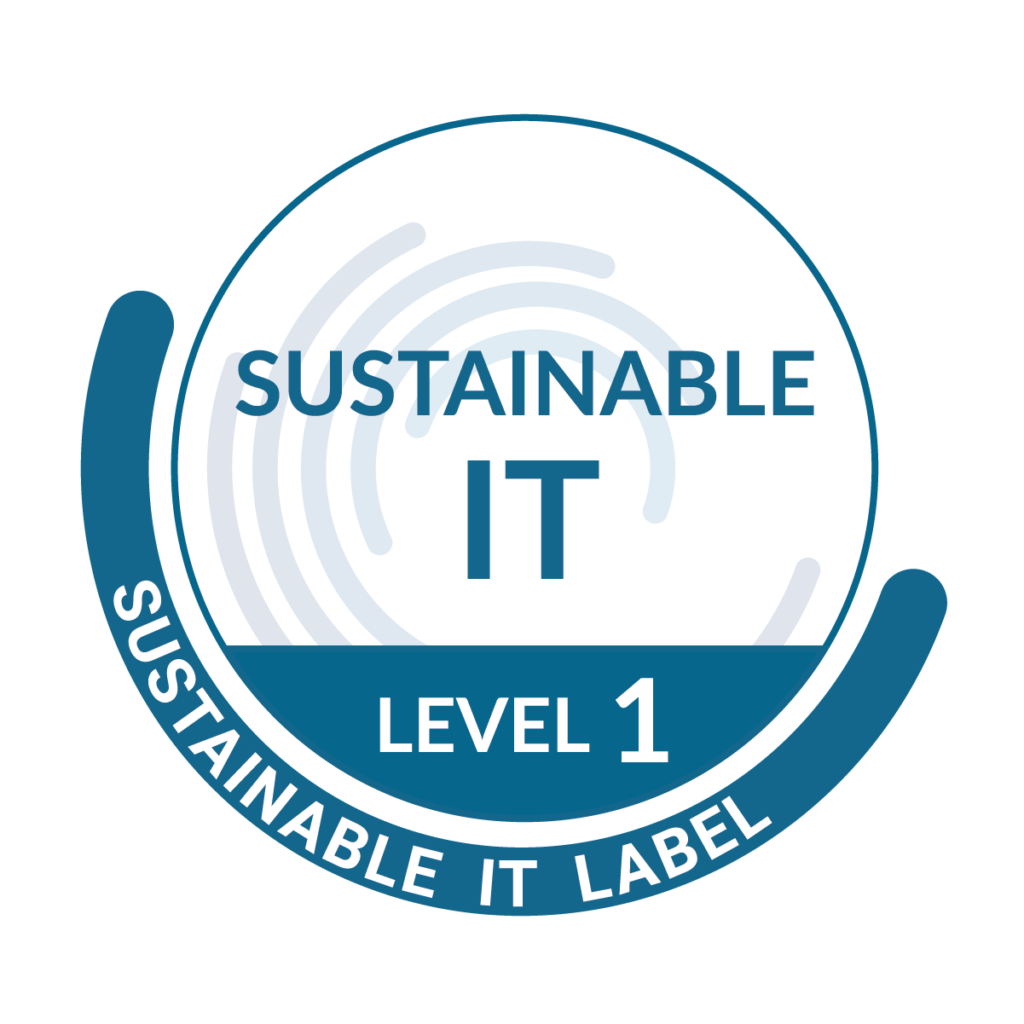The textile sector is in 4th position in terms of environmental impact in the European Union. So how can we make the textile industry more sustainable and circular?
Europe is a pioneer in scientific work relating to the Digital Product Passport in the textile field. This digital tool will be able to provide, in addition to details on the composition of textiles, information on production sites, manufacturing processes, as well as their environmental and social repercussions. This information will be intended for consumers as well as industrial players and authorities in order to monitor products from their manufacture to their end of life. This is a crucial tool aimed at guaranteeing the transparency and traceability of textile products, in response to the major challenge of the circular economy.
The Digital Product Passport (PPN) meets the challenge. It aims to collect data on the life cycle of textiles to help fashion companies and consumers make more sustainable decisions.

In 2023, the European Parliament, through the Panel for the Future of Science and Technology (STOA), requested a study concerning the potential of the Digital Passport for textile products.
Pantxika Ospital, Doctor consultant specialist in traceability, after 3 years of thesis on the subject of the Digital Passport, within e-SCM, in collaboration with the BALI Chair, and Jérémy Legardeur, professor at the ESTIA engineering school, have carried out this study.
The conclusions were presented on Thursday March 14 at the European Parliament in Strasbourg.
This study, dedicated to the Digital Product Passport (PPN) in the textile industry, is carried out within the framework of the European Union strategy for sustainable and circular textiles. It examines the potential, needs, benefits and challenges of deploying the PPN for all stakeholders in the European textile sector value chain.
The following key points emerge:
You can watch the replay of the presentation here:

e-SCM is involved in the Bali Chair which, for more than 6 years, has brought together players in the Fashion & Luxury Textile industry wishing to collaborate for circular, transparent and agile fashion. As a Supply Chain specialist, we lead the “Traceability & Transparency” working group as an axis of innovation towards more sustainable and more efficient fashion.
In her thesis work, Pantxika Ospital, e-SCM “Business” consultant, demonstrates that the data model necessary to supply a Digital Product Passport is aligned with that of an Agile Supply Chain. It makes it possible to respond to flexibility challenges to rationalize supplies in a tense economic and economic context and ensures end-to-end traceability of Finished Products thanks to systematic auditability of processes. This is where the challenge of the “Traceability & Transparency” approach lies, which guarantees compliance with regulatory requirements and supports the transition towards more responsible and more economically efficient fashion.
The European Parliament, by requesting this Report, recognizes the expertise of the research work on the Digital Passport carried out by e-SCM and supervised by ESTIA teacher-researchers.
This study has been written by Jérémy Legardeur (Professor, ESTIA Institute of Technology), Dr Pantxika Ospital (Belharra) at the request of the Panel for the Future of Science and Technology (STOA) and managed by the Scientific Foresight Unit, within the Directorate -General for Parliamentary Research Services (EPRS) of the Secretariat of the European Parliament.
Executive summary:
Textile and fashion industries worldwide are facing a triple crisis encompassing ecological, economic, and social fields.
To address these challenges and meet consumer demand for transparency, this study discusses the possible deployment of a European digital product passport (DPP). The goal would be to enhance traceability, circularity, and transparency throughout the entire lifecycle of fashion products. By offering detailed information about each product throughout its lifecycle, a DPP could promote sustainability and circular practices. This research aligns with this necessary transition within the textile and fashion sector, which aims at stimulating and accelerating the dynamics of circularity and sustainability.
Applying new information and communication technologies (NICTs) can facilitate the twin (ecological and digital) transition that the EU hopes to achieve.
However, the effective implementation of a DPP requires a comprehensive understanding of the complexities within the textile supply chain and the full digitization of industry processes.
The garment supply chain operates as a multifaceted network with numerous third parties and a buyer-driven production approach.
Retailers focus on marketing and selling apparel, while manufacturing involves a diverse array of entities worldwide, each with unique functional capacities. This diversity in capabilities leads to varying sourcing models, which, in turn, complicates traceability for buyers. Consequently, there is a lack of comprehensive information for consumers to make informed purchasing decisions and to improve product sorting and optimization of materials at the end of their life.
To develop a possible generic DPP model for the textile sector, we employed a methodology based on a bottom-up approach called grounded theory.
This approach integrates data from various sources, ensuring a comprehensive understanding of the complexities involved in creating an effective DPP for the textile industry. Our aim is to define the concept of a DPP and to analyze the information required at each stage of the product lifecycle, identifying the challenges and stakeholders involved.
We integrate data from various sources to inform our approach, including transparency initiatives within the fashion sector, insights from testimonials and experiences within the textile industry, and the regulatory and scientific framework surrounding DPP.
We define the DPP as follows: a DPP is the combination of an identifier, the granularity of which can vary throughout the lifecycle (from a batch to a single product), and data characterizing the product, processes and stakeholders, collected and used by all the stakeholders involved in the circularity process. We identified 11 categories of possible DPP aims and contributions: informing consumers, informing companies, managing resource flows, promoting circularity, sustainability indicator management, market surveillance, track and trace after sales, compliance with regulations, product
end-of-life management, commercial competitive edge, product authentication.
We also identified 8 categories of stakeholders (people or companies who could be involved or interested in using a DPP): supply chain companies, brands, retailers, authorities, certification and assessment companies, circularity operators, media, consumers.
Once the products were identified by reference ('unique' or 'batch') and brand, we identified 16 categories of information and concepts that could be contained in the DPP: product description, composition, supply chain, transport, documentation, environmental impact, social impact, impact
on animals, circularity, health impact, information on the brand, communication/media identification, granularity, quantity, costs, after-sale tracking and tracing, customer feedback.
Following our research work, we define a first version of a generic model of DPP based on the lifecycle model representation to include all the information previously mentioned.
We organized a consultation and collected feedback about this model during an online survey composed of 10 questions. The survey involved 81 textile sector stakeholders and experts from almost 20 European countries. They validated that most of the information concerning the supply chain and finished products categories should be included in a DPP, with a doubt persisting concerning the identification of transformation and transport companies. Costs are not considered an information to include for a majority of respondents. There is less consensus about information to be included regarding the distribution stage. Customer identification should also not be included concerning the usage stage. For the end of life, category, all information mentioned should be included.
Based on the results of the survey, we propose a step-by-step scenario and policy options for the deployment of a DPP in three phases:
Phase 1. Deployment of a 'minimal & simplified DPP' for textiles on a short-term horizon of 2027. This proposed 'minimal and simplified DPP' is mainly based on dissemination of mandatory information, completed with additional information that would be useful for lifecycle analysis.
Phase 2. Deployment of an 'advanced DPP' for textiles on a mid-term horizon of 2030. This 'advanced DPP' could be progressively extended to other stakeholders with more information collected all along the lifecycle, based on the findings from the first phase and the results of experimentation.
Phase 3. Deployment of a 'full circular DPP' for textiles on a long-term horizon of 2033. During this last phase, a 'full circular DPP' could be fully deployed to promote circularity in the textile sector.
The main objectives of the policy options concerning a possible textile DPP are:
